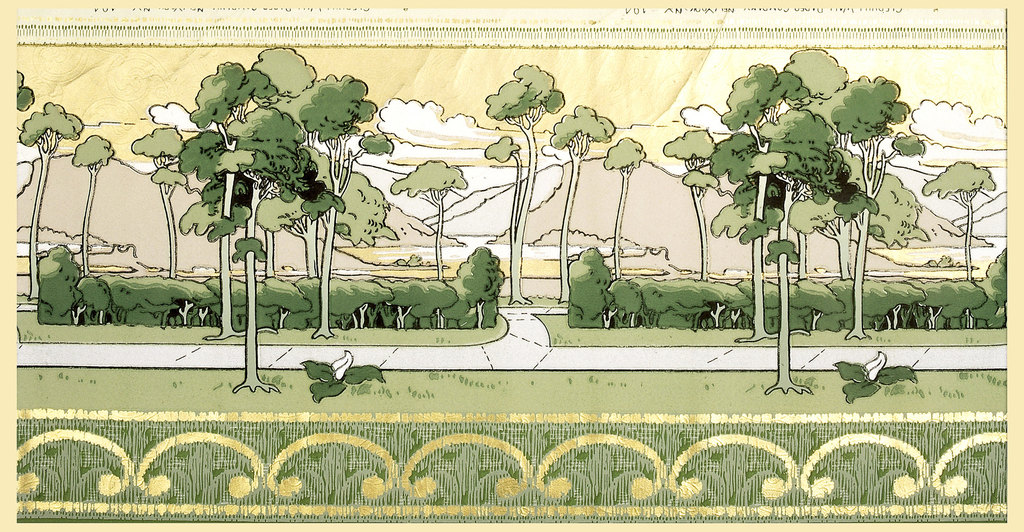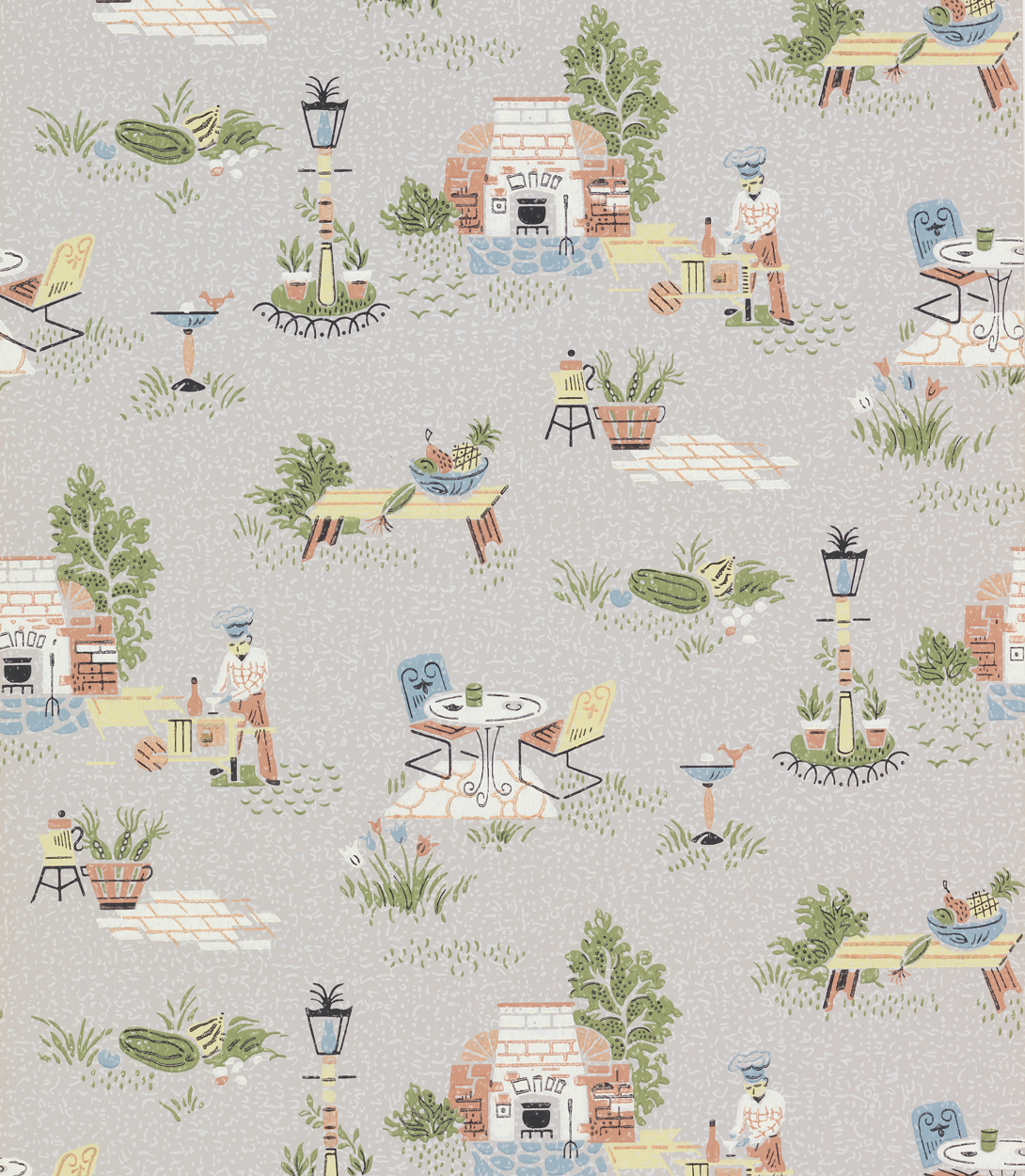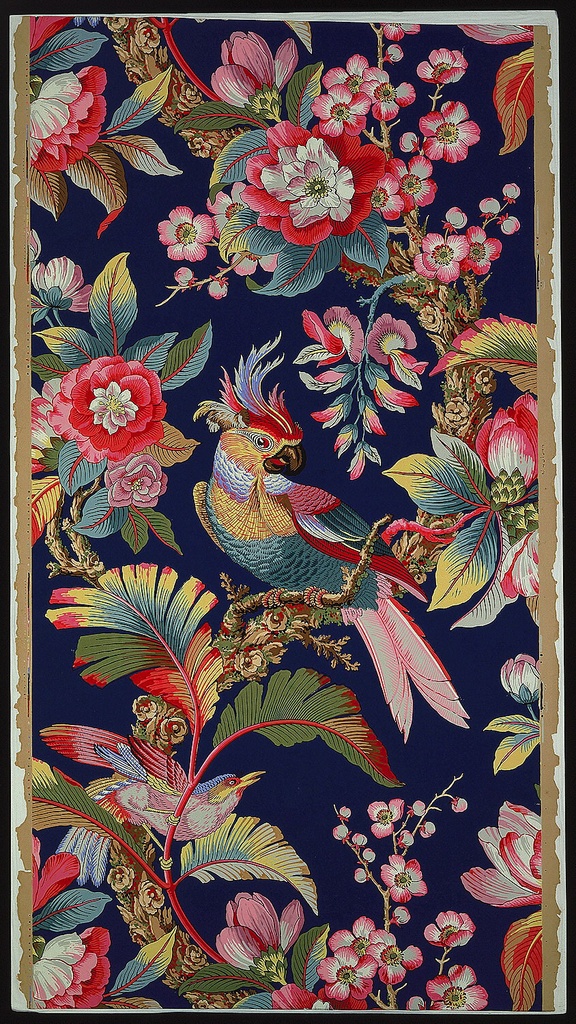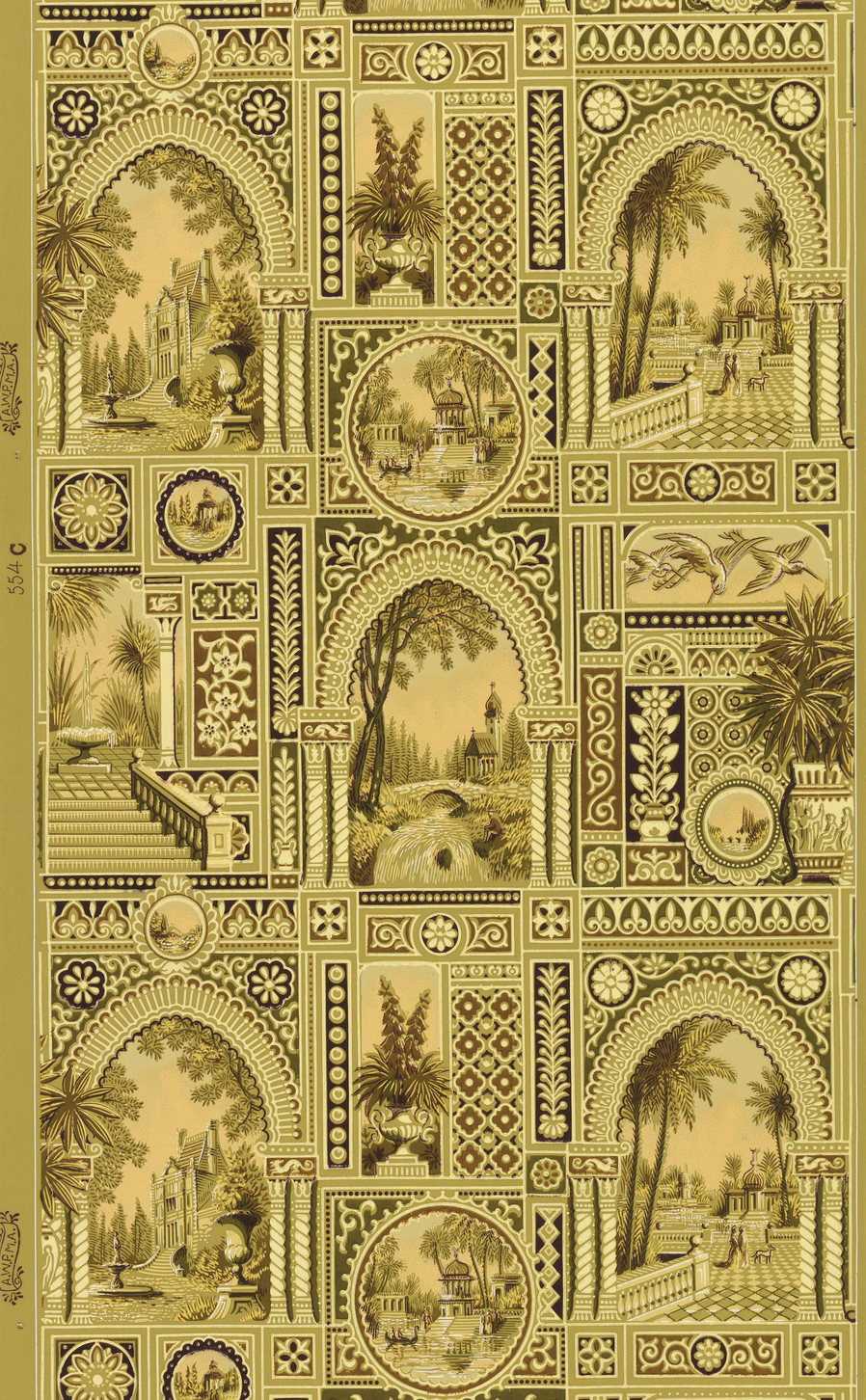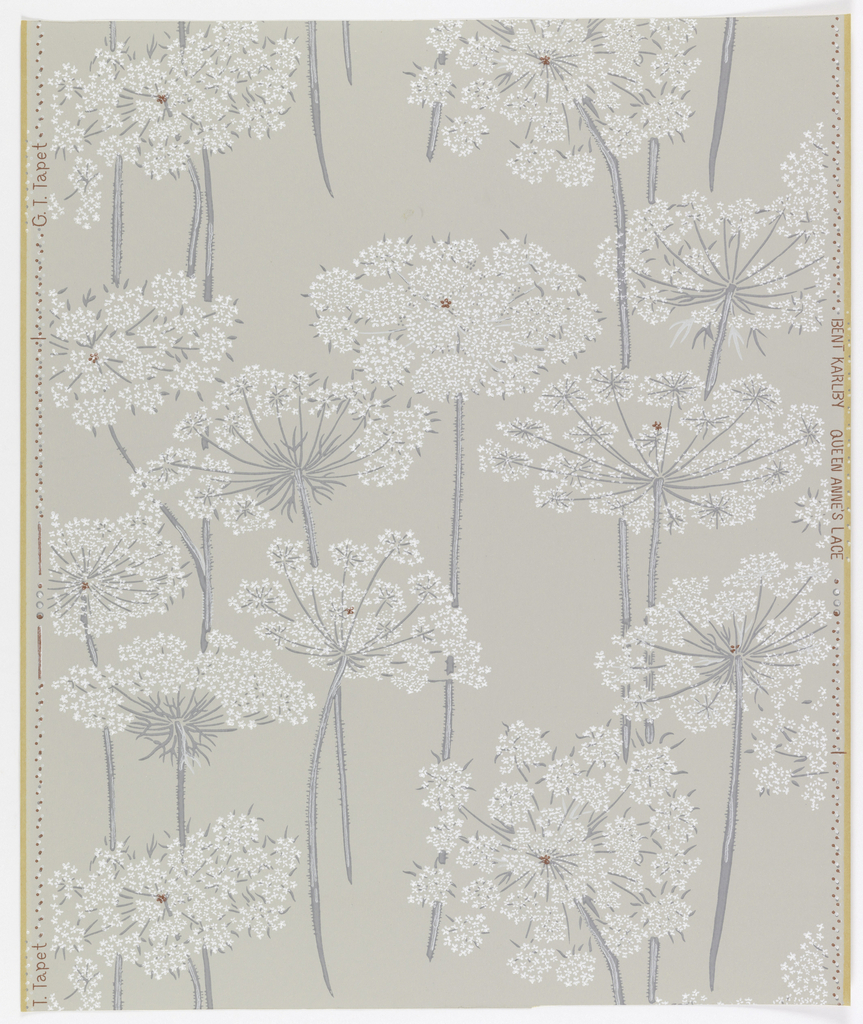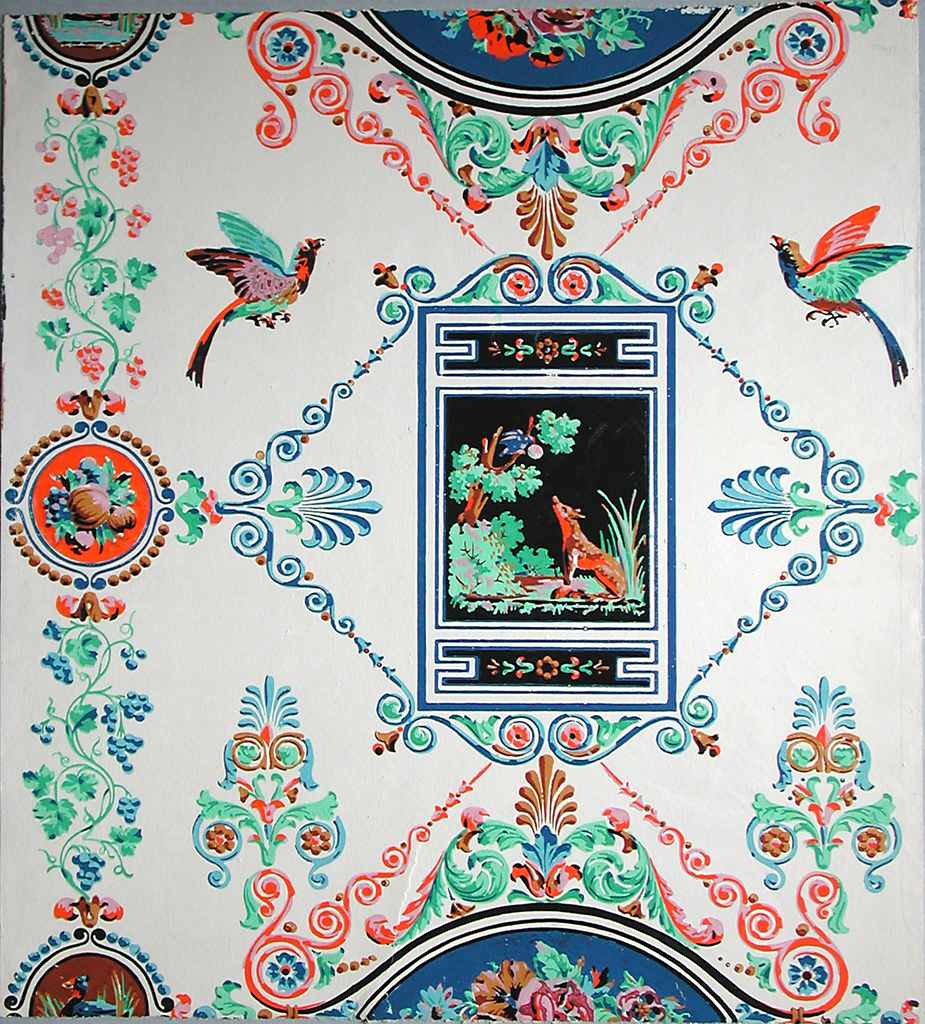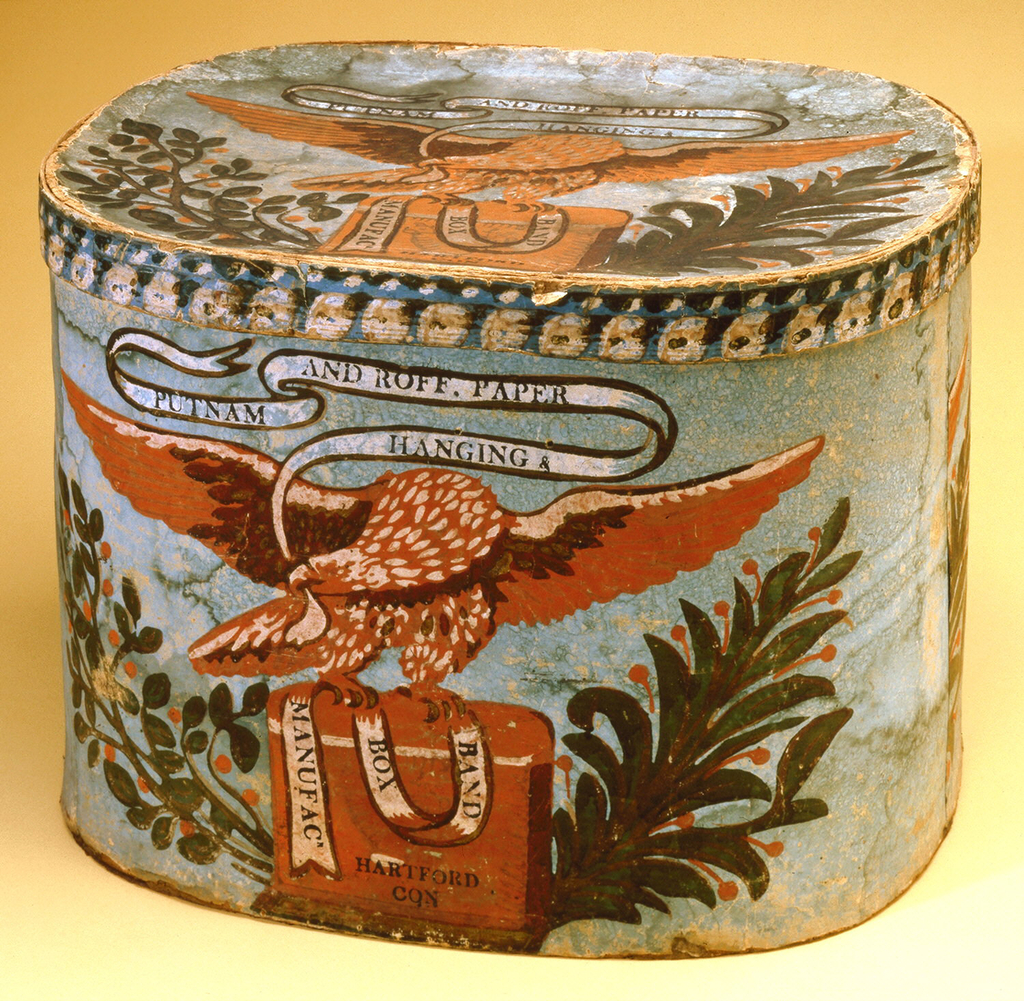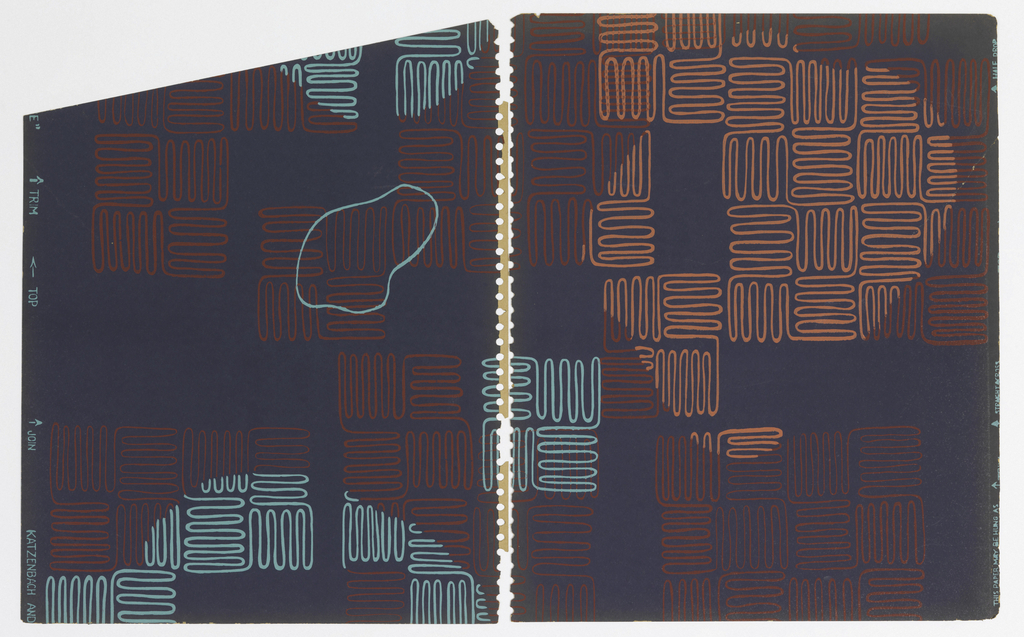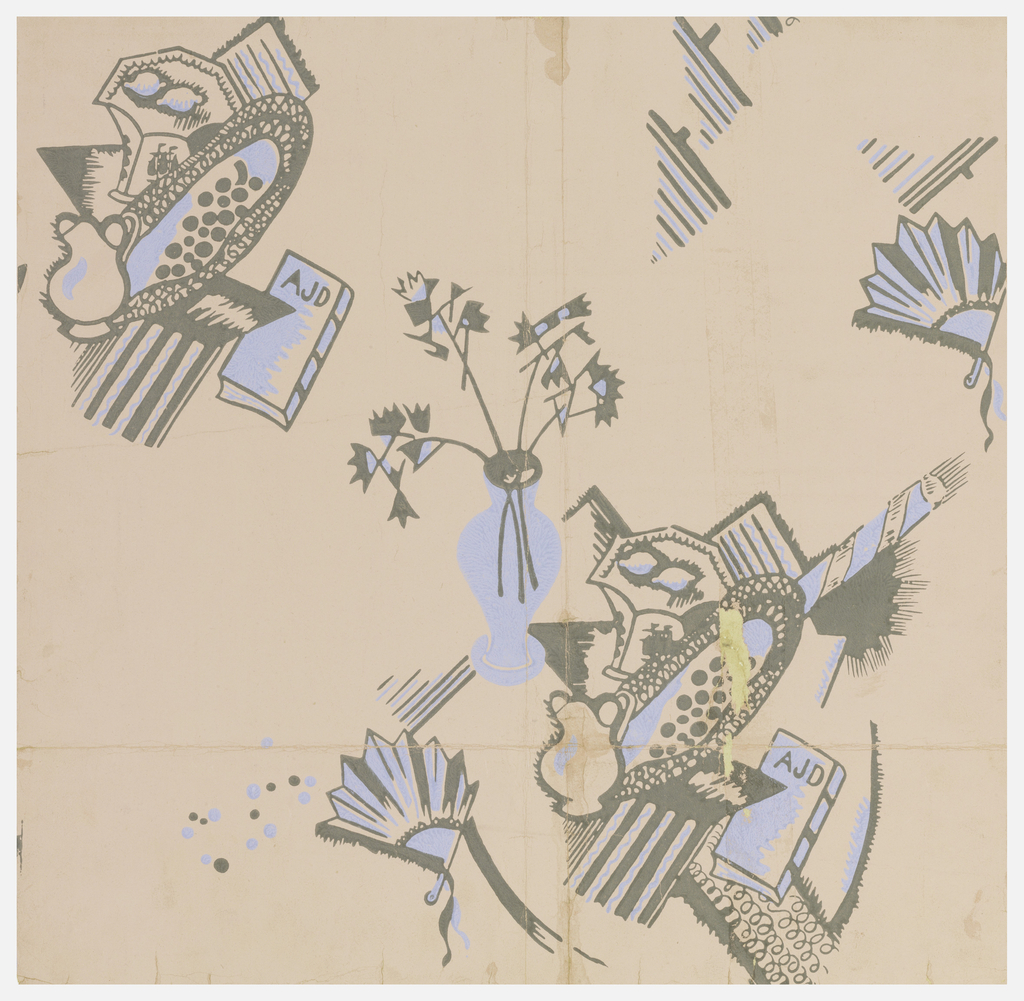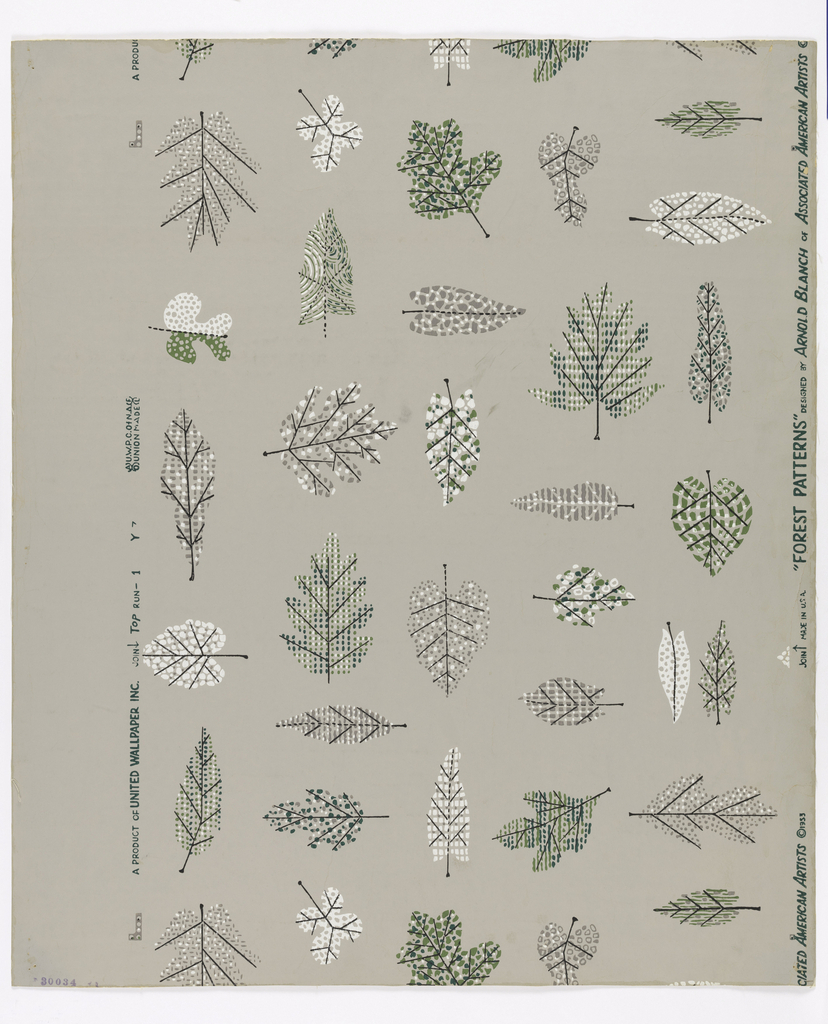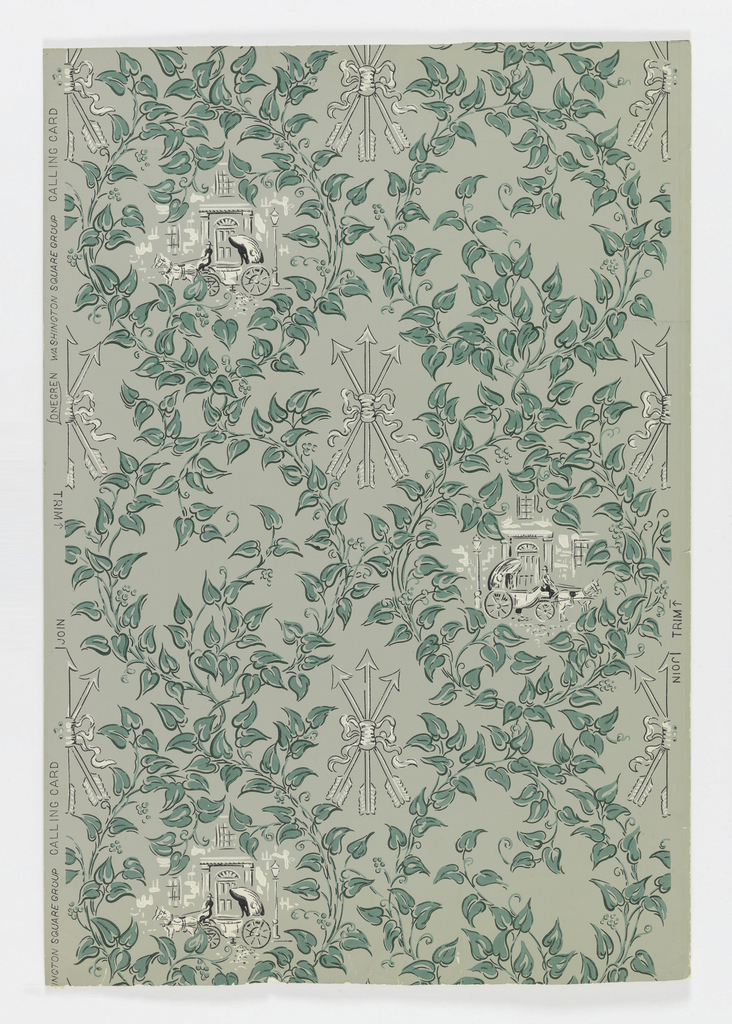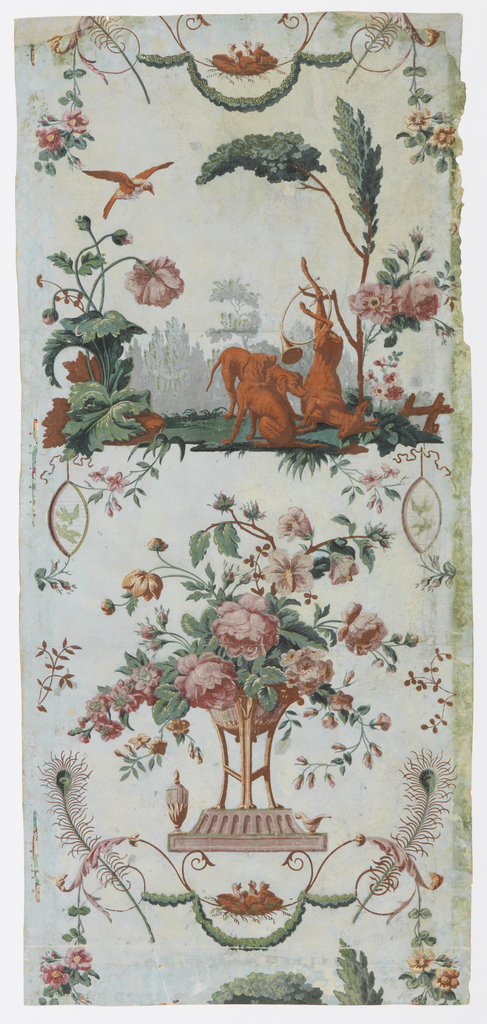In this frieze, printed by the Gledhill Wallpaper co. in 1906-7, tall, slender trees stand in the foreground, growing from a well-manicured lawn like elongated stalks of broccoli. A paved, white sidewalk runs horizontally across the length of the frieze, branching off in the center of the panel and leading to a majestic landscape of...
The weather in New York City is playing a funny joke right now. Visible from the windows of the Cooper Hewitt are sunny blue skies, trees with new green leaves, tulips, daffodils and some cheeky birds flirting with each other. After gray winter months of slush and ice, the city beckons with the promise of...
From the archives, an Object of the Day post on one of the design works featured in Rebeca Méndez Selects.
Vertically stacked archways and medallions made of Moorish tiles frame views of architecture from far off lands in this sidewall from the last quarter of the nineteenth-century. An Indian Gazebo, Turkish Mosque, French Chateau and even an onion-domed Russian church all make appearances. Palm trees, flocks of storks, waterfalls and elegant stone staircases add to...
Neutral tones and subtle pattern define this mid-century Scandinavian wallpaper. Large, airy blossoms of Queen Anne’s lace float like fluffy fireworks on a light gray ground. The larger blooms are composed of hundreds of tiny white flowers supported by a framework of dark gray stems. As in nature, a single bright red flower marks the...
Gerd Göran’s Slån wallpaper design shows pale blue dots arranged in rows within an irregular, light-gray net on white ground. The pattern is at first reminiscent of bubble wrap, or maybe even caviar, if you’re feeling fancy. Swedish speakers, however, might realize that the name of the paper hints at the designer’s inspiration. Slån (sloe,...
The fables attributed to the ancient Greek slave, Aesop, have remained relevant for thousands of years and been depicted by countless generations. Here we see an old favorite, “The Fox and the Crow,” retold through the magic of wallpaper. This paper was made in France, c. 1840, and the design is block-printed on white satin...
Bandboxes, rendered completely obsolete in today’s world of attached collars, were once a necessary possession for any man who liked to wear shirts. This patriotic example dates c. 1821- 1824, and it has lived within the collections of the Cooper Hewitt and its predecessors since 1913. The box is constructed of pasteboard covered in block-printed...
In Line, a wallpaper designed by prolific illustrator Ilonka Karasz, appears here as pages from a 1948 sample book, which originally contained the work of forty leading contemporary designers. Square blocks, each composed of a creatively arranged, continuous zigzag line, are stacked up like Tetris tiles on a dark-eggplant colored ground. The blocks are rendered...
Many of the wallcoverings in the Cooper Hewitt’s collection were created by designers better known for their work in the fine arts. This sidewall, c. 1927, was designed by Charles Burchfield, a much-loved American watercolorist. A mint-green trellis embellished with cross-hatching divides the panel into regular diamond-shaped cells. Each cell contains a stencil-like image of...
Collections of miscellaneous objects in pale blue and gray are grouped in floating clusters on a ballet-pink background. In the lower right-hand corner of the panel, a paper fan floats towards a pile of shapes that I choose to interpret as a pitcher, an upside-down lampshade, a vase of flowers, some lemons, a book with...
Forest Patterns was designed by modernist painter Arnold Blanch for Associated American Artists in 1953. It was produced by United Wallpaper, Inc., one of the largest American wallpaper producers of the mid-twentieth century. Blanch renders the leaves as graphic deconstructions of botanical illustrations. The veins and stems of the leaves are drawn in straight black...
Though Marburger Tapetenfabrik is among the oldest wallpaper manufacturers in Europe, in the 1950s they eschewed traditional patterns and became one of the many companies producing ‘contemporary’ designs meant to compliment the new, modern houses popping up all over Europe and America in the building booms following World War II. What, exactly, made wallpaper contemporary...
This lovely midcentury American wallpaper, entitled Calling Card, was designed by celebrated New York decorator Beryl Austrian, and was meant to invoke the old time grandeur of 1830s Washington Square. Two columns of mint green vines crawl their way up a gray background, forming continuous chains of leafy circles. Alternating circles contain a vignette showing...
There is ALOT going on in this arabesque panel attributed to eighteenth-century wallpaper powerhouse, Jean Baptiste Réveillon. The pattern was executed in shades of pink, green, orange and brown on a light-colored ground. As was standard for the time, the design is block printed, and the panel is composed of several smaller sheets of handmade...
